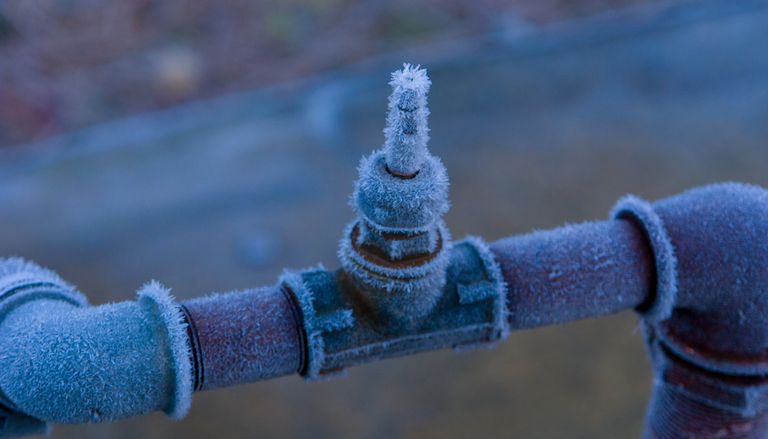Preventing Frozen Plumbing: Top Methods for Cold Weather
Preventing Frozen Plumbing: Top Methods for Cold Weather
Blog Article
Nearly everybody will have their personal assumption on the subject of 6 Ways to Prevent Frozen Pipes.

Winter can ruin your plumbing, particularly by freezing pipelines. Right here's just how to prevent it from taking place and what to do if it does.
Introduction
As temperatures decrease, the danger of frozen pipelines rises, potentially resulting in expensive repair work and water damages. Understanding exactly how to avoid icy pipes is essential for house owners in cold climates.
Recognizing Frozen Pipes
What creates pipes to ice up?
Pipes ice up when exposed to temperature levels listed below 32 ° F (0 ° C) for expanded periods. As water inside the pipelines ices up, it broadens, putting pressure on the pipeline wall surfaces and possibly creating them to rupture.
Threats and problems
Icy pipes can cause water system disturbances, home damage, and costly repair work. Ruptured pipelines can flooding homes and trigger comprehensive architectural damages.
Signs of Frozen Pipeline
Recognizing icy pipes early can prevent them from bursting.
How to recognize icy pipes
Try to find reduced water flow from taps, unusual smells or sounds from pipes, and visible frost on exposed pipelines.
Prevention Tips
Insulating prone pipes
Cover pipes in insulation sleeves or use warmth tape to safeguard them from freezing temperatures. Concentrate on pipes in unheated or external areas of the home.
Home heating techniques
Keep indoor rooms properly warmed, specifically areas with plumbing. Open up closet doors to allow warm air to circulate around pipes under sinks.
Shielding Outside Pipes
Garden hose pipes and outside faucets
Separate and drain garden tubes before winter season. Mount frost-proof faucets or cover exterior faucets with shielded caps.
What to Do If Your Pipes Freeze
Immediate activities to take
If you think icy pipes, keep faucets available to soothe pressure as the ice melts. Utilize a hairdryer or towels taken in hot water to thaw pipes slowly.
Long-Term Solutions
Structural modifications
Think about rerouting pipes far from outside wall surfaces or unheated areas. Add added insulation to attic rooms, basements, and crawl spaces.
Updating insulation
Purchase high-grade insulation for pipes, attics, and wall surfaces. Correct insulation helps maintain regular temperatures and reduces the danger of icy pipes.
Verdict
Avoiding icy pipes calls for proactive steps and quick actions. By recognizing the reasons, signs, and preventive measures, house owners can protect their plumbing throughout cold weather.
5 Ways to Prevent Frozen Pipes
Drain Outdoor Faucets and Disconnect Hoses
First, close the shut-off valve that controls the flow of water in the pipe to your outdoor faucet. Then, head outside to disconnect and drain your hose and open the outdoor faucet to allow the water to completely drain out of the line. Turn off the faucet when done. Finally, head back to the shut-off valve and drain the remaining water inside the pipe into a bucket or container. Additionally, if you have a home irrigation system, you should consider hiring an expert to clear the system of water each year.
Insulate Pipes
One of the best and most cost-effective methods for preventing frozen water pipes is to wrap your pipes with insulation. This is especially important for areas in your home that aren’t exposed to heat, such as an attic. We suggest using foam sleeves, which can typically be found at your local hardware store.
Keep Heat Running at 65
Your pipes are located inside your walls, and the temperature there is much colder than the rest of the house. To prevent your pipes from freezing, The Insurance Information Institute suggests that you keep your home heated to at least 65 degrees, even when traveling. You may want to invest in smart devices that can keep an eye on the temperature in your home while you’re away.
Leave Water Dripping
Moving water — even a small trickle — can prevent ice from forming inside your pipes. When freezing temps are imminent, start a drip of water from all faucets that serve exposed pipes. Leaving a few faucets running will also help relieve pressure inside the pipes and help prevent a rupture if the water inside freezes.
Open Cupboard Doors
Warm your kitchen and bathroom pipes by opening cupboards and vanities. You should also leave your interior doors ajar to help warm air circulate evenly throughout your home.

We had been shown that write-up about How to Prevent Your Pipes From Freezing from a good friend on our other site. You should take a moment to share this entry if you enjoyed it. Thanks for being here. Return soon.
Find Out More Report this page